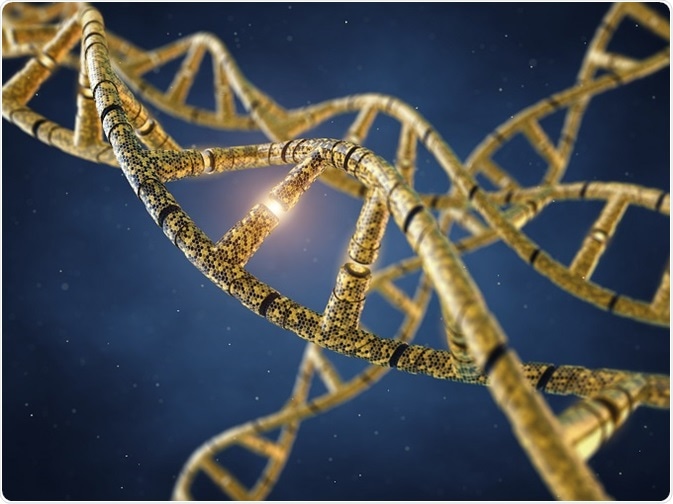Bionanotechnology is a science that sits at the convergence of nanotechnology and biology. Nanobiology and nanobiotechnology are other names that are used interchangeably with bionanotechnology. The field applies the tools of nanotechnology to biological problems, creating specialized applications.

© nobeastsofierce/Shutterstock.com
Nanotechnology is usually defined as the manipulation of materials that range from the nanometer (nm) to the micrometer (um) scale. For comparison, the cells of living organisms are typically around 10 um across. That puts the machinery and components of living cells within the nanoscale size range, making them ideal for interactions with functional nanoparticles and nanomachines.
Nanoscale materials have unusual properties distinct from bulk materials. Some of these enhanced properties include surface area, cation exchange capacity, ion adsorption, and complexation. A high proportion of the atoms in a nanoparticle are present on its surface, meaning that compared to macro-scale materials, nanoparticles have different surface compositions, different reactivity, and different types of surface interaction sites.
Biotechnology
The field of biotechnology is focused on basic research into the mechanisms of disease toward the development of new therapeutic and diagnostic devices. Bionanotechnology applications within biotechnology include the development of microfluidic devices for high throughput drug discovery assays, nanotechnology-based drug delivery devices, genome sequencing, proteomics, and imaging.
One example is the use of nanoparticles for drug delivery. A therapeutic is chemically attached to the nanoparticle. Radio or magnetic signals are then used to guide it to its target in the body. Precisely targeted drug delivery enhances efficacy and side effects due to off-target activity.
Gene delivery is another area of active research in bionanotechnology. Nanoparticle-based non-viral vectors of about 50 to 500 nm have been studied for delivery of plasmid-based DNA for gene therapy.
Pharmaceuticals
Nanotechnology is also being developed for use in the pharmaceutical industry to enhance pharmacokinetics, biopharmaceutical properties of drugs, and drug delivery. Nanomaterials can alter properties of the drug or other components of a drug formulation, and overcome difficulties in absorption of the drug or how it functions in the body.
Medicine
Nanotechnology has applications in clinical medicine and diagnostics. As an example, nanotechnology-based diagnostic devices can be used to accurately test blood for disease markers.
Nanorobotics is a developing field wherein machines are engineered from nanoscale components. In the field of nanomedicine, nanorobots have been used to carry out some interesting operations. Harvard and MIT scientists attached RNA strands to nanoparticles loaded with a chemotherapy drug, creating a nanomachine that could target and kill cancer cells. In another example, nanorobots were used to work with white blood cells to repair tissue.
Agriculture
Nanotechnology is being developed in agriculture to overcome the limitations of conventional farming. For example, nanotechnologies have the potential to increase the use of soil nutrients by plants. Nanofabricated materials containing plant nutrients in aqueous suspension and hydrogels are being studied for use in growing crops. Zerovalent iron nanoparticles or nanoparticles from iron rust could be used to remediate soils contaminated with pesticides, heavy metals, and radionuclides.
Nanotechnology is also being used for genetic modification of plants through delivery of genes and drug molecules at the cellular level.
Further Reading
Last Updated: Feb 26, 2019